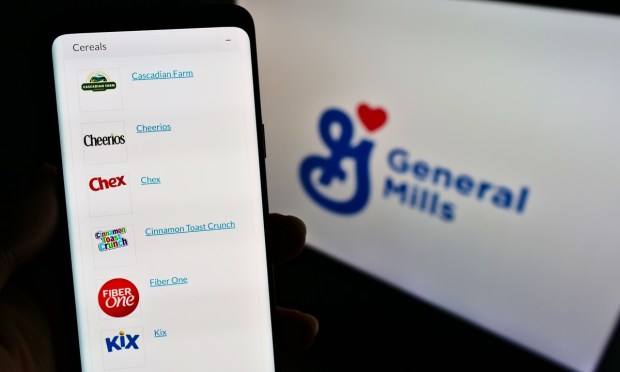General Mills’ eCommerce Personalization Drives 24% US Digital Sales Bump

As grocery brands and retailers alike look to improve their data capabilities to drive digital sales, General Mills has made eCommerce gains by improving its analytics.
On a call with analysts Wednesday (June 28) discussing the food giant’s fourth-quarter FY 2023 financial results, Chairman and Chief Executive Officer Jeff Harmening said the company has leveraged consumer data to drive a double-digit rise in digital sales in the United States.
“We plan to continue to leverage our data and analytical capabilities to assess and improve our presence on the digital shelf,” Harmening said. “These tools and processes enabled us to grow our U.S. eCommerce retail sales by 24% in fiscal ’23, and we plan to continue this momentum in fiscal ’24.”
Additionally, the food giant, parent company of a range of popular brands including Cheerios, Häagen-Dazs, Pillsbury and many others, saw positive results from its “double-digit increase” in its “digital and technology investment.”
Indeed, there is a significant opportunity for food brands to reach new eCommerce customers, with online sales representing a small but growing share of the total grocery market.
According to data from PYMNTS’ study “Tracking the Digital Payments Takeover: Catching the Coming eCommerce Wave,” created in collaboration with Amazon Web Services, which draws from an April survey of a census-balanced panel of nearly 2,700 U.S. consumers, only 12% of grocery transactions are carried out online. That said, the report revealed that about one in three consumers plans to shop for their groceries online more in the next year.
Learning to leverage the data from these transactions is especially key as ongoing inflation concerns force food brands’ hands when it comes to deals and discounts. By getting more targeted with these promotions, brands can at least get their money’s worth when they offer those discounts.
“As we look ahead to our marketing and the promotion environment, the first thing I would say is, it’s really important to remember that we still have inflation. … We would expect that promotional frequency would increase a little bit,” Harmening said.
In fact, nearly half of all grocery customers are motivated by these kinds of deals. Findings from PYMNTS’ March report, “Consumer Inflation Sentiment: The False Appeal of Deal-Chasing Consumers,” for which we surveyed more than 2,100 U.S. consumers in February, revealed that 44% of grocery shoppers are deal chasers, willing to go wherever they will get the best price.
Plus, research from last month’s installment of PYMNTS’ Consumer Inflation Sentiment series, “Consumer Inflation Sentiment Report: Consumers Cut Back by Trading Down,” which drew from an April survey of more than 2,000 U.S. consumers, revealed that 57% of grocery shoppers have cut down on nonessential spending.
Moreover, many of these inflation-concerned shoppers will decide where to make their purchases based on the discounts available to them, according to data from PYMNTS’ study “The 2023 Global Digital Shopping Index: U.S. Edition.” The report revealed that 39% of consumers considered coupon usage to be very or extremely important when choosing merchants, and an additional three percent cited this as the single most important concern when deciding where to make purchases.

